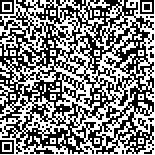| 引用本文: |
-
兰国宝,谢若痴,阎冰,叶力,陈文广,王爱民.细胞松弛素B诱导马氏珠母贝四倍体形成机制研究[J].广西科学,2001,8(3):204-209. [点击复制]
- Lan Guobao,Xie Ruozhi,Yan Bing,Ye Li,Chen Wenguang,Wang Aiming.Mechanism of the Formation of Tetraploids of Pinctada martensii Induced with Gytochalasim B[J].Guangxi Sciences,2001,8(3):204-209. [点击复制]
|
|
| |
|
|
| 本文已被:浏览 361次 下载 444次 |

码上扫一扫! |
| 细胞松弛素B诱导马氏珠母贝四倍体形成机制研究 |
|
兰国宝, 谢若痴, 阎冰, 叶力, 陈文广, 王爱民
|
|
|
| (广西海洋研究所, 北海市长青东路92号 536000) |
|
| 摘要: |
| 为了解在珍珠贝多倍体诱导中四倍体形成的机制,用醋酸地衣红染色技术研究抑制马氏珠母贝(Pinctada martensii)受精卵第一极体排放后的染色体行为。试验用贝为人工养殖贝,贝龄为2~3龄。试验用水为沙滤海水,海水比重1.018~1.020,pH值8.10~8.30。26℃~28℃下人工授精,授精前用6×10-6氨水处理卵子10min~15min。处理组用0.5mg/L细胞松弛素B(CB)处理受精卵15min;对照组为不做任何处理的受精卵。受精后每隔3min取样观察,直至受精后60min。观察结果表明,在第2次减数分裂期间,染色体分离有4种主要类型,即"随机三极分离"(28.1%)、"不混合三极分离"(7.6%)、"联合双极分离"(19.3%)和"离散双极分离"(13.6%),余下的31.5%因染色体混乱或难以确定而无法分类,但似乎是以上4种分离的变体。在受精后33min~42min,在联合双极、三极和离散双极分离的细胞中分别形成2,3和4个原核。将各种分离类型所出现的频率与产生的三倍体(33%)和四倍体(22%)比较,表明导致四倍体形成的是"离散双极分离";"不混合三极分离"也可能导致四倍体的形成;导致三倍体形成的是"联合双极分离";导致非整倍体形成的是"随机三极分离"和其他不规则的分离。 |
| 关键词: 马氏珠母贝 受精卵 染色体分离 四倍体 |
| DOI: |
| 投稿时间:2001-01-10 |
| 基金项目:国家自然科学基金(39860058)和广西自然科学基金(9912012)资助。 |
|
| Mechanism of the Formation of Tetraploids of Pinctada martensii Induced with Gytochalasim B |
|
Lan Guobao, Xie Ruozhi, Yan Bing, Ye Li, Chen Wenguang, Wang Aiming
|
| (Guangxi Institute of Oceanography, 92 East Changqinglu, Beihai, Guangxi, 536000, China) |
| Abstract: |
| To probe into the mechanism behind the formation of tetraploids in multiploid induction of pearl oyster,chromosome behaviour in fertilized eggs of Pinctada martensii following inhibition of the first polar body(PB1) was studied with acetic orcein staining techniques.The parent pearl oysters used were collected from the cultured population,aged two to three years.Gametes were obtained by strip spawning.All fertilization and incubation were conducted at 26℃ to 28℃ using filtered seawater with specific gravity of 1.018 to 1.020 and pH value 8.10 to 8.30,Eggs were activated by ammonia with a concentration of 60×10-6 for 10 min to 15 min before insemination.Two experimental groups were produced after insemination.In the treated group,the fertilized eggs were treated with 0.5 mg/L cytochalasin B(CB) for 15 min beginning at 5 min after insemination.In the untreated group,the fertilized eggs were allowed to develop as controls.Samples for analysis were collected every three minutes from the beginning of fertilization to 60 min post fertilization.The results showed that,in the treated group,four types of chromosome segregation were found in the second meiosis(MⅡ),namely "randomized tripolar segregation"(28.1%), "unmixed tripolar segregation"(7.6%), "united bipolar segregation"(19.3%) and "separated bipolar segregation"(13.6%). The remaining 31.5% could not be classified because of chromosome disorganization, but appeared to be variants of the above. At 33 min to 42 min post fertilization, two, three and four female pronuclei could be seen respectively in the eggs with united bipolar,tripolar and separated bipolar segregation. In comparison with the frequencies of segregation patterns and the turnout of triploid (33%) and tetraploid (22%), it seemed clear that resulting in tetraploids was separated bipolar segregation,and unmixed tripolar segregation might also develop to tetraploids; resulting in triploids was united bipolar segregation and resulting in aneuploids was randomized tripolar segregation and other irregular segregation. |
| Key words: Pinctada martensii fertilized eggs chromosome behaviour tetraploids |
|
|
|
|
|